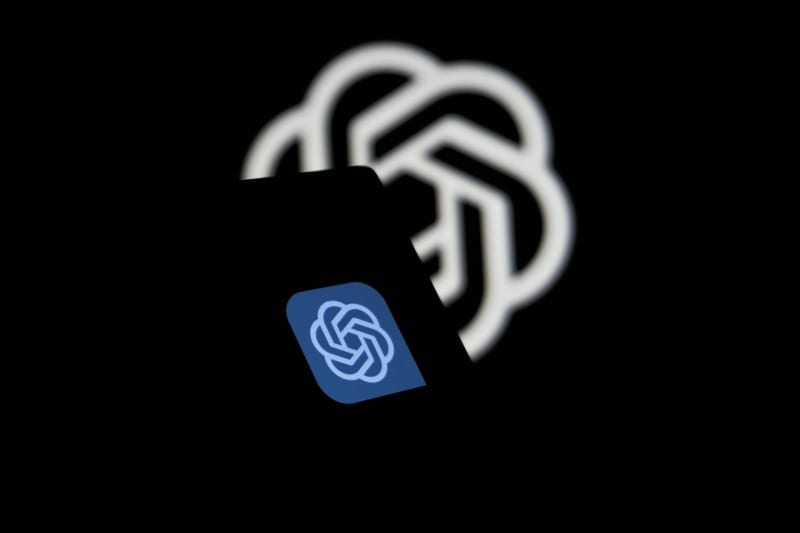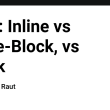The world of artificial intelligence and chatbots is evolving at a rapid pace, and ChatGPT, developed by OpenAI, has made a significant mark in the field. But it’s not the only player in the game. Industry giants like Google, Amazon, and Microsoft have their own AI chatbot offerings. In this comprehensive blog, we will explore how ChatGPT stacks up against these industry giants and other prominent AI chatbots. We’ll delve into their features, use cases, advantages, and limitations to help you understand which solution might be the best fit for your specific needs.
The Competitive Landscape of AI Chatbots
Artificial intelligence chatbots have become a transformative technology for businesses and organizations. They enable automated customer service, streamlined operations, and improved user experiences. While ChatGPT has garnered significant attention for its conversational capabilities, it’s essential to recognize the broader landscape of AI chatbot offerings:
- Google’s Dialogflow: Dialogflow, part of Google Cloud, provides natural language understanding (NLU) capabilities to create AI chatbots and virtual assistants. It is known for its ease of use, integration with various platforms, and extensive language support.
- Amazon Lex: Amazon Lex is the technology behind Alexa, Amazon’s virtual assistant. It offers advanced automatic speech recognition (ASR) and NLU capabilities, making it suitable for voice-driven chatbots and virtual assistants.
- Microsoft Bot Framework: Microsoft Bot Framework is a comprehensive set of development tools for creating chatbots. It provides various connectors for integrating with different messaging platforms, and it is known for its extensibility.
- IBM Watson Assistant: IBM Watson Assistant leverages IBM’s extensive cloud services and AI capabilities to create advanced chatbots. It is highly customizable and scalable, making it suitable for both small businesses and large enterprises.
- Rasa: Rasa is an open-source chatbot development framework. It offers complete customization and control over chatbot behavior and is suitable for organizations with specific data security and compliance needs.
These chatbot solutions have diverse features, use cases, and advantages. To assess how ChatGPT compares to these industry giants and other AI chatbots, we need to evaluate them based on specific criteria.
1. Natural Language Understanding (NLU)
ChatGPT:
ChatGPT, developed by OpenAI, is known for its advanced NLU capabilities. It can understand and generate human-like text, making it suitable for a wide range of applications, from content generation to customer support.
Dialogflow:
Dialogflow offers strong NLU capabilities, allowing developers to build chatbots that understand user intent and provide relevant responses. It is particularly effective for handling customer inquiries and providing support.
Amazon Lex:
Amazon Lex excels in NLU, especially for voice interactions. It’s suitable for creating voice-driven chatbots and virtual assistants that understand and respond to spoken language.
Microsoft Bot Framework:
Microsoft Bot Framework provides NLU capabilities but may require more development effort compared to ChatGPT or Dialogflow. It is suitable for a variety of chatbot applications, including customer service and internal communication.
IBM Watson Assistant:
IBM Watson Assistant offers robust NLU capabilities with contextual understanding. It can handle complex user interactions and provide intelligent responses, making it suitable for a wide range of industries.
Rasa:
Rasa provides high-level NLU capabilities, and its open-source nature allows developers to customize and fine-tune the chatbot’s understanding of user intent for specific use cases.
Comparative Analysis:
ChatGPT, Dialogflow, Amazon Lex, and IBM Watson Assistant offer strong NLU capabilities, making them suitable for a wide range of applications. Microsoft Bot Framework, Rasa, and ChatGPT provide customizable NLU but may require more development work.
2. Integration and Deployment
ChatGPT:
ChatGPT can be integrated into various platforms and applications through APIs. It offers versatility in terms of deployment, allowing users to integrate it into web, mobile, and other digital interfaces.
Dialogflow:
Dialogflow offers extensive integration options with popular platforms like Google Assistant, Facebook Messenger, and more. It is a cloud-based service, making it accessible and easy to deploy.
Amazon Lex:
Amazon Lex is tightly integrated with Amazon Web Services (AWS), providing scalable and cost-effective deployment options. It can be used on web and mobile platforms.
Microsoft Bot Framework:
Microsoft Bot Framework offers a wide range of development tools and connectors for integrating with various messaging platforms, including Microsoft Teams, Slack, and more. It can be deployed on Azure and other cloud services.
IBM Watson Assistant:
IBM Watson Assistant is highly integrated with IBM Cloud and other cloud services. It offers customization and extensibility for tailored deployment options.
Rasa:
Rasa offers integration options and the flexibility of on-premises deployment for organizations with specific data security and compliance requirements.
Comparative Analysis:
ChatGPT, Dialogflow, Amazon Lex, Microsoft Bot Framework, IBM Watson Assistant, and Rasa provide extensive integration and deployment options. Amazon Lex is tightly integrated with AWS, while Rasa offers on-premises deployment for added data security.
3. Customization and Extensibility
ChatGPT:
ChatGPT can be customized for specific use cases and industries. It offers a high level of extensibility for developers.
Dialogflow:
Dialogflow provides customization and extensibility options, allowing developers to create chatbots that suit their specific requirements.
Amazon Lex:
Amazon Lex offers customization for voice and text-driven chatbots. Developers can extend its capabilities to meet their needs.
Microsoft Bot Framework:
Microsoft Bot Framework is highly customizable, with various development tools and connectors for creating chatbots tailored to specific applications.
IBM Watson Assistant:
IBM Watson Assistant provides customization and extensibility for building chatbots that meet specific industry requirements and use cases.
Rasa:
Rasa is an open-source framework that offers complete control and customization of chatbot behavior. Developers can fine-tune its responses for specific tasks and applications.
Comparative Analysis:
All the mentioned chatbot solutions, including ChatGPT, provide a high degree of customization and extensibility. Rasa, as an open-source framework, offers complete control over chatbot behavior.
4. Ease of Use
ChatGPT:
ChatGPT is designed to be user-friendly, accessible to both developers and non-technical users. It offers a straightforward interface for creating chatbots.
Dialogflow:
Dialogflow is known for its ease of use, making it accessible to both technical and non-technical users. It provides a user-friendly interface for building chatbots.
Amazon Lex:
Amazon Lex is user-friendly, especially for creating voice-driven chatbots. It offers easy-to-use tools for developers and non-technical users.
Microsoft Bot Framework:
Microsoft Bot Framework may require more technical expertise for development compared to ChatGPT, Dialogflow, and Amazon Lex.
IBM Watson Assistant:
IBM Watson Assistant provides a visual chatbot builder for non-technical users, making it accessible to a wide range of users.
Rasa:
Rasa requires more technical expertise for development and may not be as user-friendly as some other solutions.
Comparative Analysis:
ChatGPT, Dialogflow, Amazon Lex, and IBM Watson Assistant are designed to be user-friendly, with interfaces that cater to both technical and non-technical users. Rasa and Microsoft Bot Framework may require more technical expertise.
5. Scalability
ChatGPT:
ChatGPT is scalable for a wide range of applications, from content generation to customer support. It can handle various workloads.
Dialogflow:
Dialogflow is scalable and suited for both small businesses and large enterprises. It can accommodate increased user interactions.
Amazon Lex:
Amazon Lex is scalable, thanks to its integration with AWS, which offers the infrastructure and resources required for scaling.
Microsoft Bot Framework:
Microsoft Bot Framework is scalable and can adapt to the growing demands of organizations, especially those using Azure services.
IBM Watson Assistant:
IBM Watson Assistant is scalable and suitable for both small businesses and large enterprises, thanks to its cloud-based infrastructure.
Rasa:
Rasa is scalable but may require more customization and resources to accommodate growth in user interactions.
Comparative Analysis:
All the mentioned chatbot solutions are scalable to varying degrees. Amazon Lex leverages AWS infrastructure for scalability, while Rasa may require more customization for scalability.
6. Cost Considerations
ChatGPT:
Pricing for ChatGPT depends on usage and specific agreements with OpenAI. It offers a flexible pricing structure for users.
Dialogflow:
Dialogflow’s pricing varies based on usage and requirements. It offers a range of pricing plans to accommodate different needs.
Amazon Lex:
Amazon Lex’s pricing is determined by usage, and it offers a pay-as-you-go model. Costs may increase with higher usage.
Microsoft Bot Framework:
Microsoft Bot Framework’s pricing depends on usage and the specific services and resources used. Costs can vary based on requirements.
IBM Watson Assistant:
IBM Watson Assistant’s pricing is determined by usage and specific cloud services utilized. It offers customizable pricing options.
Rasa:
Rasa is an open-source framework, making it cost-effective for organizations that can handle the development and maintenance internally.
Comparative Analysis:
The cost considerations for chatbot solutions vary, with pricing determined by usage and specific agreements. Rasa, as an open-source framework, offers a cost-effective option for organizations with in-house development capabilities.
Comparative Analysis Summary
Let’s summarize the comparative analysis of ChatGPT and other AI chatbot solutions:
- Natural Language Understanding (NLU): ChatGPT, Dialogflow, Amazon Lex, and IBM Watson Assistant offer strong NLU capabilities. Microsoft Bot Framework, Rasa, and ChatGPT provide customizable NLU.
- Integration and Deployment: ChatGPT, Dialogflow, Amazon Lex, Microsoft Bot Framework, IBM Watson Assistant, and Rasa offer extensive integration and deployment options. Amazon Lex is tightly integrated with AWS, while Rasa offers on-premises deployment.
- Customization and Extensibility: All mentioned solutions, including ChatGPT, provide a high degree of customization and extensibility. Rasa offers complete control over chatbot behavior.
- Ease of Use: ChatGPT, Dialogflow, Amazon Lex, and IBM Watson Assistant are user-friendly, catering to both technical and non-technical users. Rasa and Microsoft Bot Framework may require more technical expertise.
- Scalability: All solutions are scalable to varying degrees. Amazon Lex leverages AWS infrastructure for scalability, while Rasa may require more customization.
- Cost Considerations: Costs vary based on usage and specific agreements. Rasa, as an open-source framework, offers a cost-effective option for organizations with in-house development capabilities.
Use Cases and Industry Applications
Now, let’s explore the use cases and industry applications of ChatGPT and these AI chatbot solutions:
ChatGPT:
- Content Generation: ChatGPT is widely used for generating content, including articles, reports, marketing materials, and more.
- Customer Support: It can serve as a virtual customer support agent, handling inquiries and providing assistance.
- Conversational AI: ChatGPT powers chatbots for apps, websites, and social media, providing engaging and natural interactions.
Dialogflow:
- Customer Support: Dialogflow is used for creating virtual customer support agents capable of understanding and responding to user queries.
- Virtual Assistants: It is employed to build virtual assistants for apps, websites, and platforms like Google Assistant and Facebook Messenger.
Amazon Lex:
- Voice-Enabled Applications: Amazon Lex is used to create voice-driven applications, such as virtual assistants for smart devices like Alexa.
- E-commerce: It powers chatbots for e-commerce platforms, assisting customers with product recommendations and inquiries.
Microsoft Bot Framework:
- Enterprise Communication: Microsoft Bot Framework is used for building chatbots for internal and external communication within organizations.
- Productivity Tools: It powers virtual assistants for productivity tools, improving workflow efficiency.
IBM Watson Assistant:
- Customer Service: IBM Watson Assistant is used for creating virtual agents that handle customer service inquiries.
- Cognitive Chatbots: It powers chatbots capable of analyzing data and providing insights, particularly in data-intensive industries.
Rasa:
- Custom Industry Applications: Rasa is used to build custom chatbots tailored to specific industry requirements, including healthcare, finance, and more.
- Data-Driven Decision-Making: Rasa powers chatbots that assist organizations in making data-driven decisions.
Limitations and Challenges
All AI chatbot solutions have limitations and challenges that need to be considered:
- Model Limitations: ChatGPT and other AI chatbots may not always understand highly specialized or technical queries. Manage user expectations and provide alternative support channels for complex issues.
- Privacy and Data Security: Ensure that chatbots handle user data securely and comply with privacy regulations. Protect sensitive information and implement encryption as necessary.
- Ethical Use: Use chatbots ethically and responsibly, avoiding deployment for malicious or harmful purposes, which can harm an organization’s reputation and relationships with users.
Conclusion
ChatGPT, developed by OpenAI, is a strong contender in the world of AI chatbots, offering advanced NLU capabilities, versatility, and customization. However, it’s important to recognize that it’s not the only option available. Industry giants like Google, Amazon, Microsoft, and IBM, along with open-source frameworks like Rasa, provide formidable alternatives.
When selecting an AI ChatGPT alternative for your specific needs, consider factors like natural language understanding, integration, customization, ease of use, scalability, and cost. Each solution has its own strengths and use cases, making it crucial to match the solution with your organization’s requirements.
Whether you choose ChatGPT, Dialogflow, Amazon Lex, Microsoft Bot Framework, IBM Watson Assistant, or Rasa, the key is to leverage the power of AI chatbots to enhance customer experiences, streamline operations, and drive innovation within your industry. Each of these solutions represents a step forward in AI chatbot capabilities, and the choice should align with your unique goals and objectives.
References






